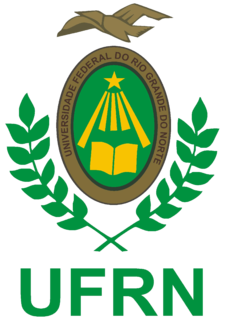
Purdue University is a public land-grant research university in West Lafayette, Indiana, and the flagship campus of the Purdue University system. The university was founded in 1869 after Lafayette businessman John Purdue donated land and money to establish a college of science, technology, and agriculture in his name. The first classes were held on September 16, 1874, with six instructors and 39 students. It has been ranked as among the best public universities in the United States by major institutional rankings, and is renowned for its engineering program.
Postgraduate education involves learning and studying for academic or professional degrees, academic or professional certificates, academic or professional diplomas, or other qualifications for which a first or bachelor's degree generally is required, and it is normally considered to be part of higher education. In North America, this level is typically referred to as graduate school.

Sorbonne University is a public research university located in Paris, France, established by the merger of Paris-Sorbonne University and Pierre et Marie Curie University, along with smaller institutions. Its current legal status was introduced in 2018, but the institution's legacy reaches back to 1257 when Sorbonne College was established by Robert de Sorbon as part of the medieval University of Paris. The latter was then divided into 13 universities in 1970, all holding the same legacy of the dissolved University of Paris. Sorbonne University is now one of the most prestigious universities in Europe and the world; as of 2021, its alumni and professors have won 33 Nobel Prizes, six Fields Medals, and one Turing Award.

Shirley Marie Tilghman, is a Canadian scholar in molecular biology and an academic administrator. She is now a professor of molecular biology and public policy and president emerita of Princeton University. In 2002, Discover magazine recognized her as one of the 50 most important women in science.

The Federal University of Minas Gerais is a federal research university located in the state of Minas Gerais. Its main and biggest campus is located at the city of Belo Horizonte, Brazil. It is one of Brazil's five largest and best universities, being the largest federal university. It offers 79 undergraduate education programs, upon completion of their curricular schedule the student is awarded either a Bachelor's degree, a Licenciate degree, or a Professional title, all officialized by the issue of a University Diploma. It also has 90 postgraduate education programs, awarding 30 postbaccalaureate specialization degrees, 92 Master's degrees, and 72 Doctoral degrees, as well as 41 medical residency programs offered at UFMG's hospital facilities complexes. The UFMG has a population of roughly 72 thousand people among 34,482 undergraduate students, 2,247 postbaccalaureate specialization students, 10,556 Master's and Doctoral students, 3,202 professors, and 4,246 administrative employees. Competition to get into undergraduate programs involved 111,718 candidates to 6740 vacancy openings. It is research-oriented, even at the undergraduate level, whose students are encouraged to take part in research development through the Scientific Initiation program. Out of the number of professors, 761 (24%) are CNPq award-recipients due to outstanding research productivity. It encompasses 860 research groups, 1051 patent deposits in Brazil and abroad, and has the highest score at the Ministry of Education's undergraduate assessment.

The State University of Campinas, commonly called Unicamp, is a public research university in the state of São Paulo, Brazil. Unicamp is consistently ranked among the top universities in Brazil and Latin America.

The University of São Paulo is a public university in the Brazilian state of São Paulo. It is the largest Brazilian public university and the country's most prestigious educational institution, the best university in Ibero-America, and holds a high reputation among world universities, being ranked 100 worldwide in reputation by the Times Higher Education World University Rankings. USP is involved in teaching, research and university extension in all areas of knowledge, offering a broad range of courses.

The University of Science and Technology of China (USTC) is a public research university in Hefei, Anhui, China, under the direct leadership of the Chinese Academy of Sciences (CAS). It is a member of the elite C9 League. It is also a Chinese state Class A Double First Class University. Founded in Beijing by the CAS in September 1958, it was moved to Hefei in the beginning of 1970 during the Cultural Revolution.

Dale Raymond Corson was the eighth president of Cornell University. Born in Pittsburg, Kansas, in 1914, Corson received a B.A. degree from the College of Emporia in 1934, his M.A. degree from the University of Kansas in 1935, and his Ph.D. in physics from the University of California, Berkeley in 1938.
An undergraduate degree is a colloquial term for an academic degree earned by a person who has completed undergraduate courses. In the United States, it is usually offered at an institution of higher education, such as a college or university. The most common type of these undergraduate degrees are associate's degree and bachelor's degree. Bachelor's degree typically takes at least three or four years to complete. In some other educational systems, undergraduate education is post-secondary education up to the level of a master's degree; this is the case for some science courses in Britain and some long-cycle medicine courses in Europe. These degrees can be categorised as basic or first professional degrees.
The Research School of Physics (RSPhys) was established with the creation of the Australian National University (ANU) in 1947. Located at the ANU's main campus in Canberra, the school is one of the four founding research schools in the ANU's Institute of Advanced Studies.

São Paulo State University is a public university run by the state government of São Paulo, Brazil.

Hamdard University is a private research university with campuses in Karachi and Islamabad, Pakistan. It was founded in 1991 by the renowned philanthropist Hakim Said of the Hamdard Foundation. Hamdard is one of the first and the oldest private institutions of higher education in Pakistan. In Karachi, Hamdard University is the largest private research university with a campus area of over 350 acres.

Laboratório Nacional de Luz Síncrotron is the Brazilian Synchrotron Light Laboratory, a research institution on physics, chemistry, material science and life sciences. It is located in the city of Campinas, sub-district of Barão Geraldo, state of São Paulo, Brazil.

The Federal University of Rio Grande do Norte is a public Brazilian university funded by the Brazilian federal government, located in the city of Natal, Rio Grande do Norte, Brazil.

Federal University of ABC is a Brazilian federal public institution of higher learning based in Santo André and São Bernardo do Campo, municipalities belonging to the ABC region, both in the state of São Paulo.

The College of Natural Science (NatSci) at Michigan State University is home to 27 departments and programs in the biological, physical and mathematical sciences.
The College of Pharmacy is one of eight major academic divisions, or Colleges, of Purdue University. It was established in 1884, and is the 3rd oldest state-funded school of pharmacy in the United States. The school has consistently ranked highly among its peer institutions.

The Escola Politécnica of the University of São Paulo is an engineering school at the University of São Paulo (USP) in São Paulo, Brazil.
Hellmut Fritzsche was an American physicist.














